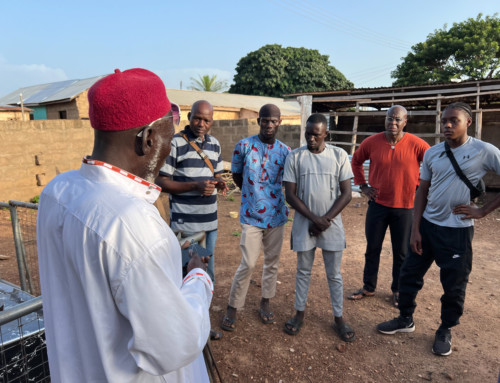National oil companies seek efficient, adaptive technology that excels in deep-water drilling.
As the international demand for oil and gas rises, producers are heavily focusing on extending recovery from producing wells and developing new assets. In the Middle East and North Africa, the national oil companies (NOCs), which administer most of the oil and gas reserves in the region, are making plans to triple their production to keep up with current demand.
This growth has altered the mix of onshore and offshore production in the region. What was once an 80 percent onshore, 20 percent offshore ratio has now shifted to a 60-40 mix. New fields in the Arabian Gulf and in deeper waters off the coast of North Africa have spurred the race offshore. Whether onshore or off, the equipment must always be made to exacting standards to provide long-term reliability.
Metering Pump Reliability

As oil & gas producers look to triple their production, offshore end users will need more powerful pumps. (Article images courtesy of Milton Roy.)
Metering pump technology is progressing to ensure that global and MENA operators have the technology for growing offshore production. Metering pumps have kept the oil flowing for decades by injecting chemicals such as methanol, monoethylene glycol and corrosion inhibitors to improve flow and product recovery. If these chemicals stop flowing, the platform’s production stops.
Although metering pumps are relatively small components on a platform, they play a critical role. Much like a rivet on the wing of an airplane, a metering pump failure can compromise the entire operation.
The reliability of the platform’s metering pumps is a non-negotiable demand of offshore drilling, especially when considering how much the value of a day’s production exceeds the pump’s cost.
Exploration and drilling efforts in deeper waters have magnified the need for pump reliability. Temperature and pressure challenges increase as the geology changes; even in the shallow water of the Arabian Gulf, pressure challenges can reach extreme levels. Offshore drilling requires a typical drill depth of 25,000 to 35,000 feet regardless of location. The back pressure can measure five to seven times greater than what is present at the surface.

High-pressure pumpFeaturing a metallic liquid end with a PTFE double diaphragm, this pump is designed for high pressures (above 400 bar) and is ISO 29001 certified.
Metering pumps in these environments must deliver 20,000 psi. The control must accurately and consistently dose wells. Meanwhile, adaptation to the changing conditions of the well’s life cycle is key.
Pumps must deliver massive amounts of hydraulic power while efficiently conserving electrical energy—a precious commodity on an offshore rig. The rig needs to be autonomous and produce its own electricity to operate. Any equipment must be highly efficient, especially equipment that requires great power to operate.
Many NOCs in the MENA region work with engineering, procurement and construction (EPC) integrators, who build the platforms. These platforms feature all the technologies needed to drill, process and separate oil and gas, and communicate with submersible equipment on the sea floor. Instead of selling to the operator, pump manufacturers and equipment producers sell directly to EPCs.
In many instances, EPCs embed pumps deep into the structure of multi-tiered rigs, which are then moved offshore to remote locations. The move offshore renders equipment laborious and expensive to service or repair, so hardware for the region’s harsh environments must be engineered to last several decades without issue or compromise
Offshore Pumping Demands

Specialized metering pump. This specialized metering pump features a vertical motor configuration and metallic liquid end with metallic double diaphragm. The pump is designed for pressures up to 1,380 bar.
The higher demands of offshore drilling require more powerful pumps that meet the rigorous standards of American Petroleum Institute (API) 675. Compliant pumps provide consistent chemical delivery for the deepest subsea wells to assure crude oil flow and product recovery while protecting the production piping. This prevents hydrate formation, wax and scale deposits and corrosion.
The latest API 675 pumps can cover flow rates from 2.7 liters per hour (L/h) to more than 16,000 L/h, and pressures up to 1,379 bar to meet the changing flows and pressures during offshore production. One specialized pump design features multiple liquid ends (packed plungers, metallic or polytetrafluoroethylene (PTFE) double diaphragms). The modularity provides a customized solution for multiple pump applications. The drives in the pump series experience increased performance because of the design’s new liquid ends, which extend the pump’s overall capabilities.
To accommodate space limitations, metering pump designs should fit into vertical or horizontal motor configurations. Smaller deck footprints are required to accommodate different rig requirements. A pump’s weight on an offshore rig is a significant concern to integrators and EPCs, as even 10 pounds for a particular piece of equipment can make a difference
Right Place, Right Time
Several factors in the Middle East and North Africa are colliding to create a “right place, right time” scenario for new equipment. Newly discovered fields in deeper offshore environments require more exotic materials in Saudi Arabia, Kuwait, Qatar, United Arab Emirates and Oman. In addition, the industry’s infrastructure throughout the region is due for upgrade and modernization. Production facilities that have been running since the 1970s now require upgrades to accommodate new safety rules and regulations.
The need for modern equipment with updated design and safety features will continue to grow, as oil and gas producers find their product where it is most abundant—in deeper waters, all around the globe.
Author Bio:
As global product line manager for Milton Roy (a division of Accudyne Industries), Axel Bokiba leads the company’s strategic marketing activity for the entire Milton Roy brand in all global markets. He oversees and directs several market research projects and detailed customer insights on industry sectors and end-user applications. He can be reached at Axel.Bokiba@miltonroy.com. For more information on Milton Roy’s Primeroyal X pump series, please visit www.miltonroy.com.
5 Challenges for Offshore End Users in the MENA Region
-
On an offshore rig, footprint is everything. Offshore rigs must operate with limited capacity compared with onshore wells, meaning higher demand on fewer pumps. Equipment footprint is even more restricted on stimulation vessels, which can often accommodate only four to 10 pumps.
-
The closer the offshore rig is to a port or other docking station, the better. Unlike onshore operations, offshore rigs require that ships carry production materials, crew members and their supplies. Without careful planning, operators can find themselves stalled without the right resources.
-
Horsepower is another high demand for offshore wells. The required horsepower, however, depends on the well depth. Traditional oilwells will not require as much horsepower as deep-water projects, which are becoming more common as the MENA region expands production.
-
Larger and deeper offshore wells often require advanced stimulation vessels. In fact, with the advances in stimulation technology, vessels are sometimes preferred over rigs.
-
Operators on vessels can adapt to the needs of the well and change direction more quickly than on rigs. While the MENA region turns to extended recovery techniques for its mature wells, it is important to remember that all wells eventually run dry. A service company may be the answer to avoiding hefty penalties for well abandonment. More than 20,000 wells have been abandoned worldwide.




